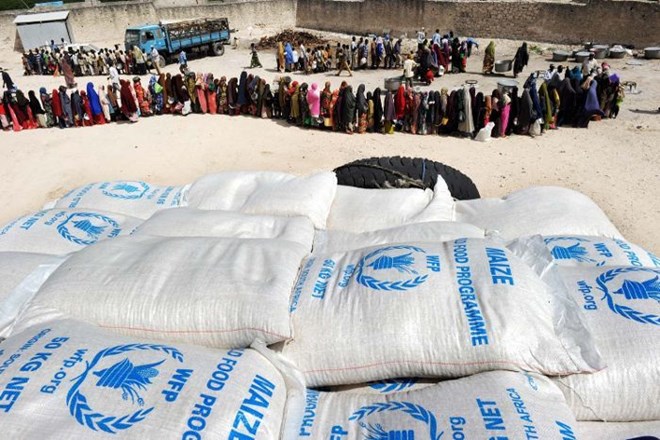
Monday April 27, 2020
By AGGREY MUTAMBO

Somalis queue for food aid at a camp in Mogadishu. (AFP: Roberto Schmidt )
Somalia has launched a portal to publicise information how donor money is utilised in a bid to raise the transparency in the eyes the public and the international community.
Managed by the Ministry of Planning, Investment and Economic Development, the platform known as Aid Information Management System (AIMS) launched this week is the country’s first attempt in three decades to aggregate information on donor contributions and where the money has been going.
Somalia’s Planning Minister Gamal Hassan said the portal at http://aims.mop.gov.so/ will help provide more accurate data on sectors that have benefitted more from donor funding, as well as indicate whether the money has been used effectively.
“The creation of a portal is a necessity borne out of the immense volume of information we, at the Ministry of Planning, Investment and Economic Development (MoPIED), process on a daily basis. For example: more than 650 projects were started or scaled up in 2019 alone,” Mr Hassan told the Nation.
“These projects were funded by a large number of partners. The FGS [Federal Government of Somalia] wants to enhance transparency and accountability and through this platform, we can ensure that our stakeholders (including the public) are aware of how we use ODA [official Development assistance).”
Somalia has largely been donor-dependent as it strives to stand up from years of insecurity. It also relies heavily on remittances from the diaspora as its tax base is still too small to run the economy.
Officials say Somalia received about $1.9 billion in Official Development Assistance last year, which included $934 million in humanitarian support, with development aid reaching $924 million.
Some of the key donors include the World Bank, the United Kingdom, European Union and Germany, who jointly provided about half of the country’s development aid in 2019, or $500 million. The United States alone gave Somalia about half of the humanitarian aid in 2019, official records show.
Recently, the country qualified for debt relief under an arrangement known as the Heavily Indebted Poor Countries (HIPC) Initiative. Under this, the International Monetary Fund (IMF) and the World Bank's International Development Association ruled Mogadishu eligible for debt reduction from $5.2 billion as at 2018 to $557 million once it reaches the HIPC Completion Point in about three years’ time.
That completion Point, the IMF and World Bank say, will be pegged on Somalia maintaining a macroeconomic stability, reducing poverty and “and putting in place a set of reforms focused on fiscal stability, improving governance and debt management.”
The lenders have also asked that Somalia implements inclusive development and social conditions necessary for human development.
Mr Hassan added that the portal will also aggregate information on funding towards federal states, signaling a positive shift in the working relationship between different levels of government in Somalia.
“We also know that these projects are being carried out in collaboration with a large number of Implementing partners. The projects are scattered all across the country,” he said.
“In short, the platform serves the purposes of coordination, follow-up, monitoring and Evaluation (M&E), as well as transparency and accountability, all of which lead to efficiency and trust building.”
The Minister argued the portal could help reduce graft levels in the country. Since 2007, Somalia has tailed in the Transparency International’s annual corruption index, although officials have publicly rejected TI’s methodology.